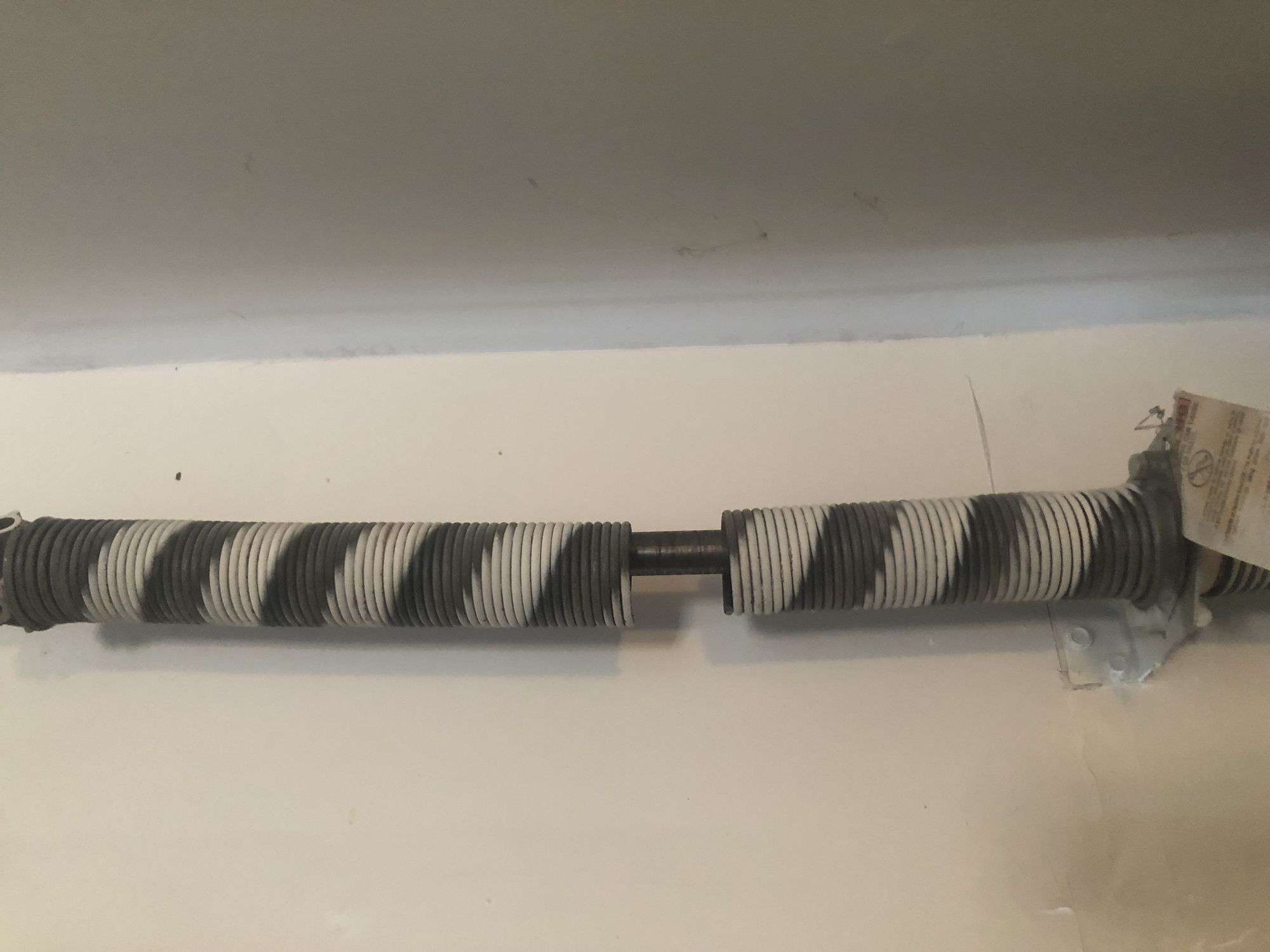Chances are, like most homeowners, your garage door is probably the last thing on your mind. It does its job quietly, day in and day out.
Until one day, it doesn’t.
Suddenly, you’re in a rush, juggling a million things, and the door refuses to budge. You try every trick you can think of, but nothing works.
The truth is that garage doors don’t typically fail without warning. They give signs, often months in advance. Maybe they open a little slower than usual, make grinding sounds, or stall halfway before mysteriously kicking back to life. Paying attention to these early red flags can save you from being caught off guard in a sticky situation.
At Thompson Garage Doors, we’ve been offering expert-backed garage door repairs in Reno, NV, for many years now. Based on our expertise, we’ve compiled this comprehensive guide on everything you need to know about garage door repair.
Let’s dive in!
Table Of Content
1. How to Repair a Bent Garage Door2. Garage Door Won’t Open or Close
3. Slow Garage Door Operation
4. Garage Door Falls Too Quickly
5. Noisy Operation
6. How to Fix a Garage Door That Moves Unevenly
7. Remote Control or Keypad Malfunction
8. The Garage Door Motor Runs Without the Door Moving
9. How to Deal with a Frozen Garage Door in Winter
10. Fixing a Broken Garage Door Window
11. Garage Door Repair Costs: What to Expect
12. Emergency Garage Door Repair: When Time Is of the Essence
13. Preventative Maintenance Tips to Avoid Future Repairs
14. The Wrap Up
How to Repair a Bent Garage Door
We’ve all had those moments when a minor distraction or quick misjudgment leads to an unfortunate accident—like backing into the garage door and leaving a dent or a bend.
But before you start stressing about replacement costs, consider if the damage can actually be repaired.
In many cases, the answer is yes! The type of repair needed will depend on the extent and location of the damage.
Minor Dents and Bends
If the dent is small, you can try using a rubber mallet, a block of wood, or a car dent puller to nudge the metal back into shape gently. Take your time and proceed carefully to avoid making the damage worse.
More Significant Damage
For more extensive dents or bends, it’s best to call in a professional. Experienced garage door repair services use specialized tools and expertise to assess the damage and determine the most effective solution.
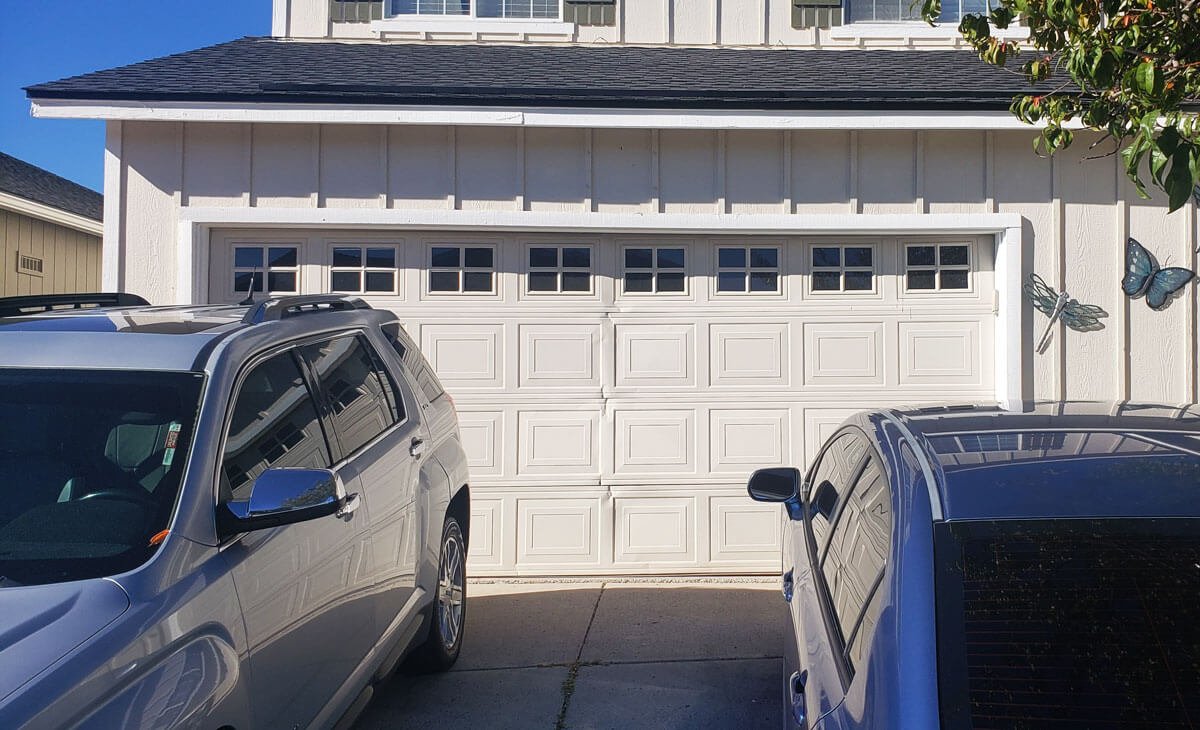
Get Your Garage Door Working Perfectly!
Garage Door Won’t Open or Close
Few things are as frustrating as a garage door that refuses to open or close when you need it. Fortunately, many of these issues can be resolved with simple troubleshooting.
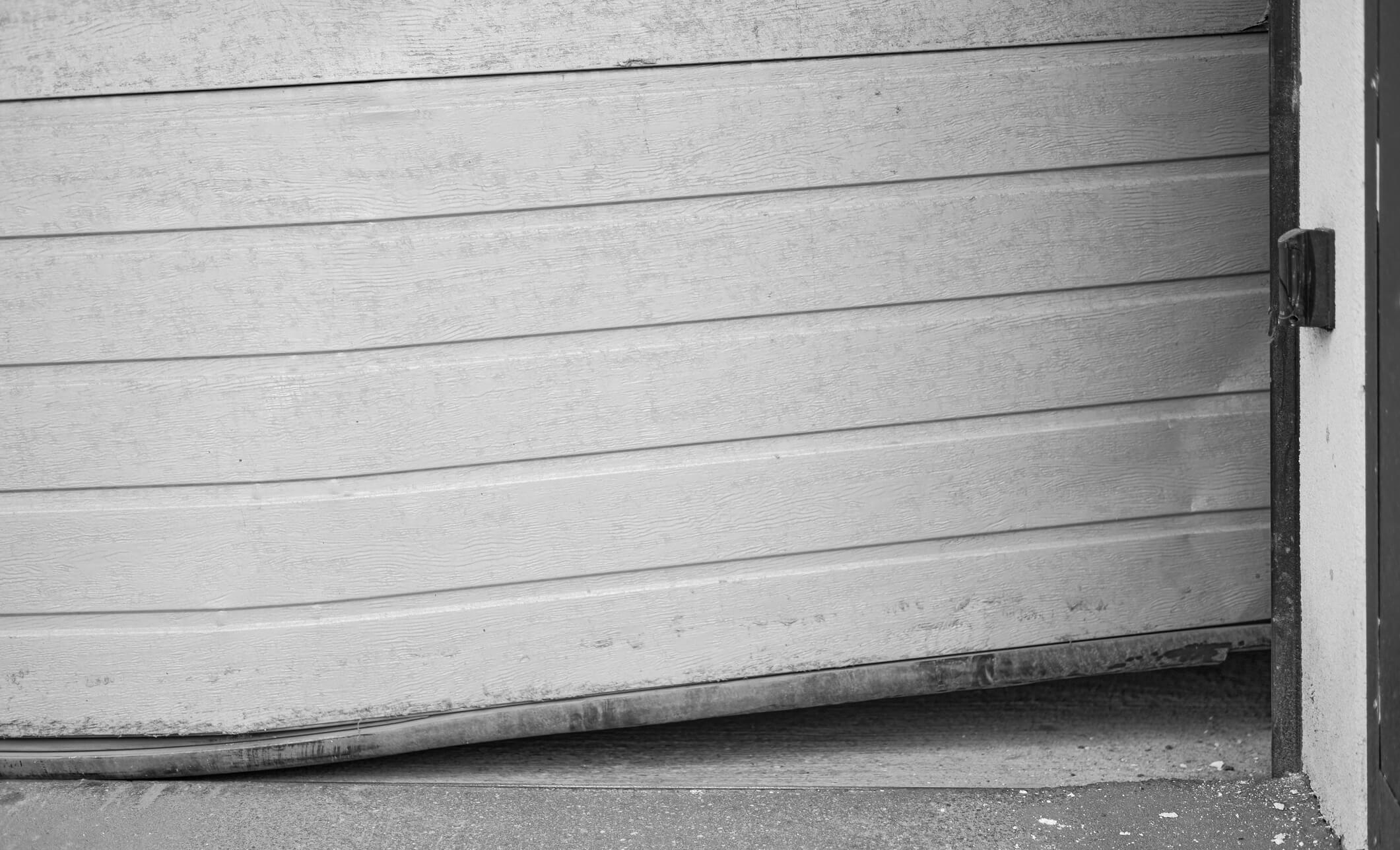
Fixing a Garage Door that Won’t Close Properly
If your garage door is struggling to close all the way, several common culprits might be at play, including misaligned sensors, power issues, or an obstruction blocking the door.
Check the Sensors:
Most garage doors have photo-eye sensors positioned near the base to prevent the door from closing on anything in its path. If these sensors are dirty or misaligned, they may keep the door forced open as a safety measure.
Use a soft cloth to clean the sensor lenses, then check their alignment. Adjust them slightly to ensure they’re facing each other directly. A steady light on each sensor indicates they’re aligned correctly.
Clear Obstructions:
Sometimes, the issue is as simple as an object blocking the door’s path. Check that there’s nothing on the ground or caught in the track that could be preventing the door from closing. Even small items can interfere with the sensors and cause the door to stop or reverse mid-close.
How to Fix a Garage Door That Won’t Open
Your garage door might refuse to open due to broken springs, damaged cables, or a problem with the opener itself. Here’s how to address it:
Inspect the Springs and Cables:
The springs and cables work together to lift the garage door. If one of them is broken or loose, the door might struggle to open or stay open. Carefully inspect each spring and cable for visible damage, like snapping or fraying.
Important: Do not attempt to repair any springs yourself. Springs bear a significant amount of tension to support the door’s weight and mishandling them can lead to serious injury. Call in a roofing contractor instead.
Check the Opener:
If you hear the motor running, but the door doesn’t open, there might be a problem with the opener mechanism.
Start by resetting the opener: turn off the power for a minute, then switch it back on.
Next, examine the opener’s settings and make sure nothing obstructs the chain or belt that drives the door. For older models, consider checking the batteries in the remote- low power can sometimes prevent the door from responding properly.
Find Garage Door Solutions Instantly!
Slow Garage Door Operation
Over time, garage doors may start to slow down, often due to:
- Low battery
- Lack of lubrication
- Spring tension issues
- Faulty garage door opener motor
To fix things:
Lubricate the Rollers and Tracks
A common cause of slow operation is friction in the moving parts. Apply a garage door lubricant to the rollers, tracks, and hinges. Avoid using standard WD-40, as it can attract dust and debris. Instead, use a lubricant specifically designed for garage doors.
After applying, test the door to see if it operates more smoothly.
Adjust the Spring Tension
Adjusting the spring tension can help improve door speed. However, be sure to address this with caution. Because the springs are under high tension, excessive adjustments can lead to wear or even breakage.
If the springs appear worn or damaged, consider calling for professional garage door repair instead of trying to manage things yourself.
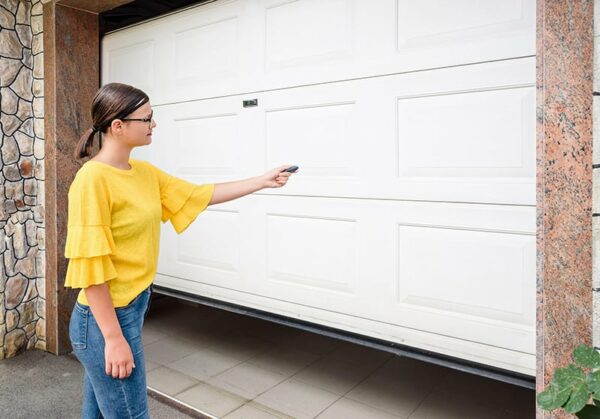
Garage Door Falls Too Quickly
A garage door that suddenly drops or closes too quickly is a serious safety risk. Given how heavy these doors are, the last thing you want is for them to fall before people can get out of the way.
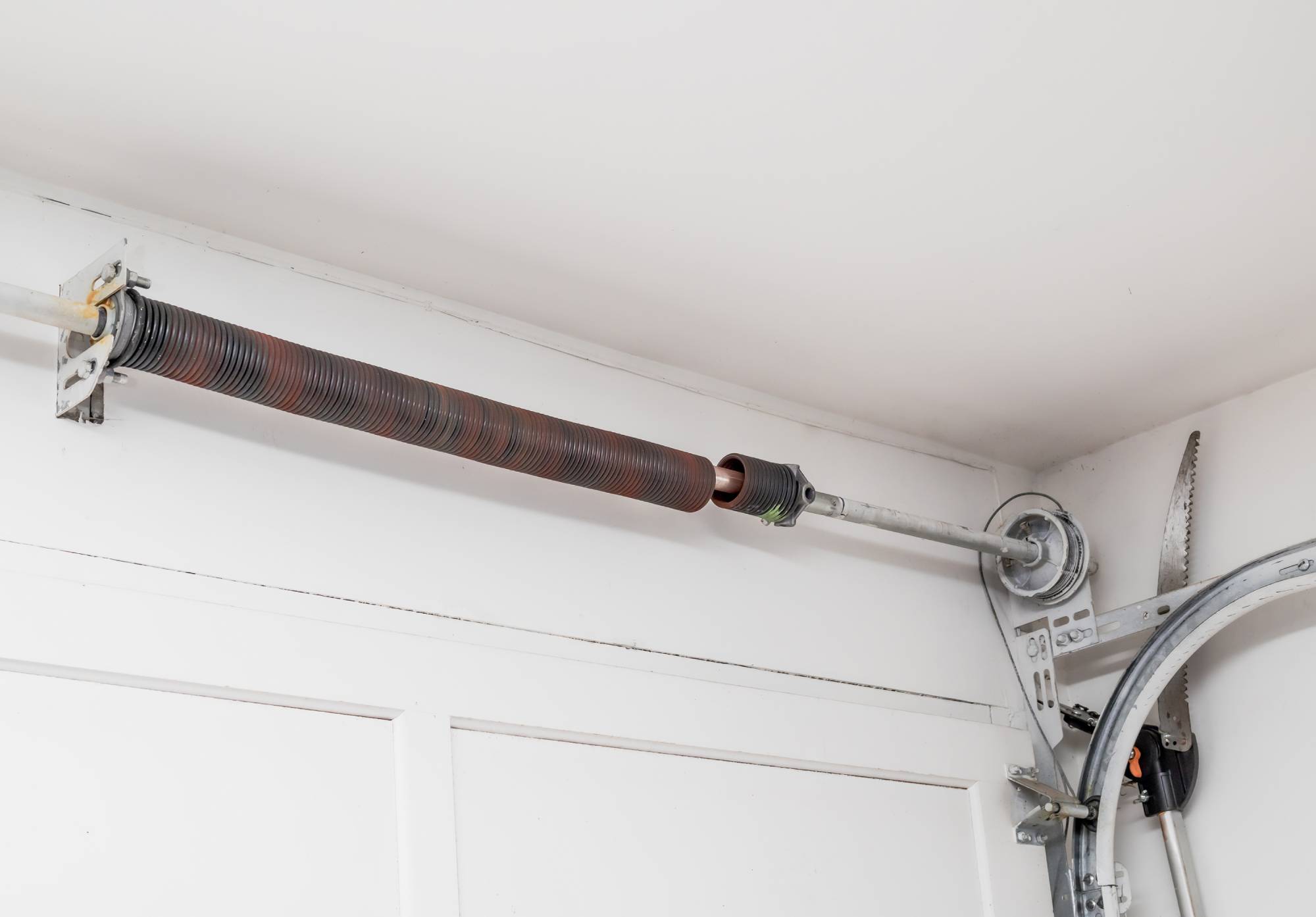
Inspect the Springs
As mentioned, the springs control a lot of the garage door’s descent. A broken or worn-out spring may fail to support the door’s weight and cause it to fall quickly.
Visually inspect each spring for signs of wear, such as gaps, rust, or snapping. Once you notice a problem, get professionals to repair your garage door.
Check the Cables
The cables that work in tandem with the springs can also fray, especially if they’ve been exposed to harsh conditions or heavy use.
Carefully check each cable for visible fraying or signs of breaking. Like with springs, handling cables on your own can be risky due to the weight and tension they support. Contact an emergency garage door repair service company without delay.
Discover Pro Garage Door Repair Methods!
Noisy Operation
While you wouldn’t expect your garage door to be completely silent, persistent loud noises aren’t normal.
Listen closely to the door. Squeaking or grinding noises usually mean the rollers or hinges could use some lubrication. On the other hand, a popping or snapping sound could indicate an issue with the springs.
Tighten Loose Hardware
The constant up-and-down movement of your garage door can loosen screws, bolts, and nuts along the door, tracks, and hinges.
Loose hardware is one of the biggest culprits behind noisy garage doors. Go over each component and carefully tighten anything that feels loose to prevent unnecessary rattling or vibrations.
Lubricate Moving Parts
Lack of lubrication is another major reason for garage door noise. Be sure to lubricate the hinges, rollers, and springs twice a year with a garage door-specific lubricant.
How to Fix a Garage Door That Moves Unevenly
Anytime your garage door moves unevenly, it should set off warning bells in your head. Uneven movement not only affects the door’s operation but, if left unchecked, can lead to more serious damage down the line.
Repairing a Garage Door That Shifts While Moving
Garage doors might move unevenly due to a few reasons. Let’s look at what they are and how to address them.
Misaligned Tracks:
When a track shifts out of alignment, it can cause the door to tilt or jerk as it moves.
To fix this, carefully loosen the bolts holding the tracks in place, then gently tap the tracks back into position using a rubber mallet. Once aligned, retighten the bolts to secure the tracks.
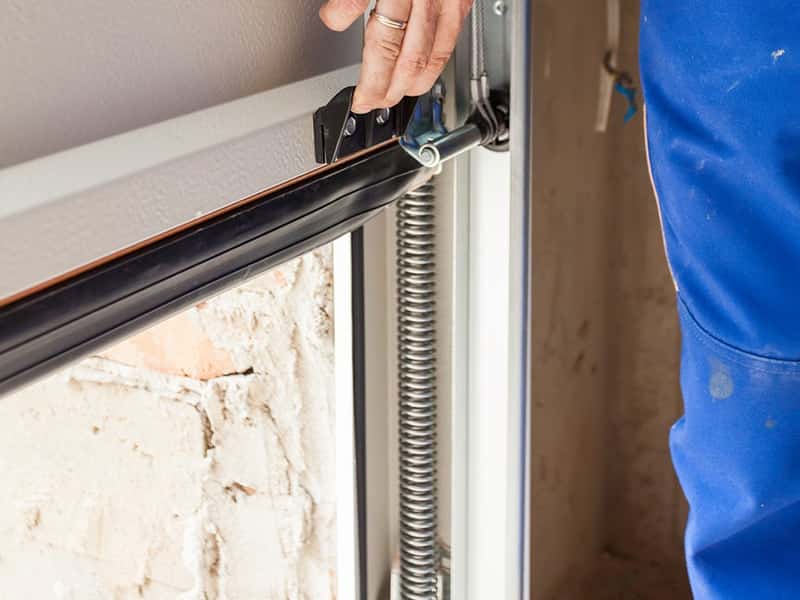
Damaged or Worn Rollers:
Damaged or worn rollers can cause the door to wobble or jerk. Check each roller for signs of wear, such as cracks or flattening. Replace damaged rollers to restore smooth movement.
Frayed Cables:
Worn or stretched cables can make one side of the door lag behind the other. Look for signs of wear on each cable, such as fraying or thinning. Call a professional to replace cables that look damaged or appear to have lost tension.
Fix Your Garage Door Like Experts!
Remote Control or Keypad Malfunction
Most of us rely on our garage door remote or keypad for easy, hassle-free access, so it’s definitely frustrating when they don’t work as expected. Luckily, a few quick steps can help solve the problem:
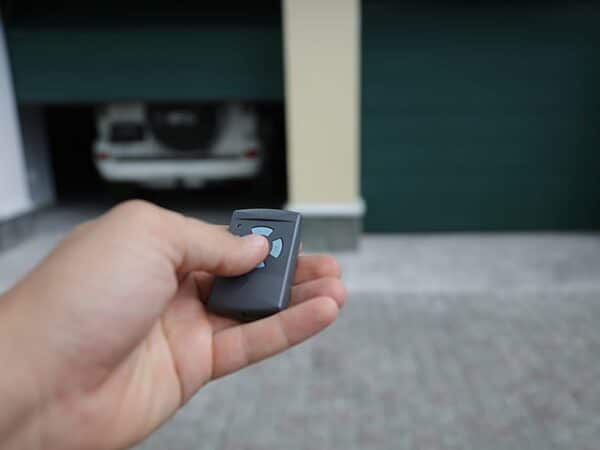
How to Fix a Garage Door Remote Control that Doesn’t Work
Try these fixes to get your garage door remote back up and running:
Check the Batteries:
Remote control issues are often due to dead or weak batteries. Replace the batteries and test the remote again.
Look for Signal Interference:
Sometimes, other electronic devices can interfere with the signal. Move any wireless devices or electronics away from the opener and remote.
Inspect the Opener’s Antenna:
Make sure the opener’s antenna is hanging down freely. A damaged or obstructed antenna can limit the remote’s range.
Reset the Remote:
If the remote still isn’t working, try resetting it. Refer to your garage door opener’s manual for specific instructions. But generally, this involves pressing the “Learn” button on the garage door openers and reprogramming the remotes.
Check the Wiring:
In case none of the above steps work, there might be a wiring issue in the opener itself. Inspect for any loose or damaged wires and contact a garage door opener repair pro if you suspect wiring problems.
How to Fix a Garage Door Keypad That’s Not Working
When your keypad isn’t responding, these steps can help diagnose and fix the issue:
Replace the Batteries:
Keypads also require batteries, and weak power can cause malfunctions. Swap out the old batteries with fresh ones.
Check for Signal Issues:
See that the keypad has a clear line of sight to the garage door opener and that there’s no interference from other devices.
Reset the Keypad:
Most keypads can be reset by entering a new code or by following the manufacturer’s reset instructions. Depending on the model, you’ll need to press and hold a specific button on the keypad or the opener.
Consider a Replacement:
If the keypad is old or still not working after resetting, it may be time to replace it. Faulty keypads can lose functionality over time.
The Garage Door Motor Runs Without the Door Moving
Imagine this: you press the button to open your garage door, hear the motor running, and nothing happens. It’s a puzzling situation, but the causes are usually straightforward to identify.
Troubleshooting Garage Door Motor Malfunction
Here are some common reasons why the motor might be running without the door moving and what you can do about it.
Belt or Chain Disconnect:
Generally, a belt or chain connects the motor to the door. Over time, this connection can loosen or slip off, causing the motor to run without moving the door.
Look closely at the drive system – if the belt or chain has slipped out of place, you may be able to reattach it by adjusting it back onto the track or gear. Make sure it’s secure before testing the door again.
Damaged Motor:
Older garage door motors can wear down or develop internal issues. Listen for unusual sounds like grinding or clicking- these typically indicate motor wear. Contact a garage door repair professional for further diagnosis and possible repair or replacement.
Disengaged Release Mechanism:
Many garage doors have a manual disconnect switch or cord (often red) that allows you to open the door manually in case of power failure. Sometimes, this switch gets pulled accidentally, disengaging the motor from the door. Ensure the lever is in the ‘engaged’ position to reconnect it to the garage door opener system.
Perfect Your Garage Door Repair Techniques!
How to Deal with a Frozen Garage Door in Winter
Cold weather and ice buildup can accidentally freeze your garage door shut, more so in places like Reno, where it gets frosty in winter.
The good news is that you can safely thaw a frozen garage door and prevent future freezing with a few simple steps.
How to Fix a Frozen Garage Door
Here’s how to thaw your garage door the right way:
Check for Ice Buildup:
Ice buildup is usually the main culprit behind a frozen garage door. Moisture can gather at the base, and when temperatures drop, it freezes and creates a seal that prevents the door from opening.
Thaw the Door:
Pour a small amount of warm (not hot) water along the frozen edge to loosen the ice. Alternatively, you can hold a hairdryer a few inches away from the affected area.
Gently Tap the Door:
If you’re still having trouble, try using a rubber mallet to gently tap along the bottom edge. Avoid using metal tools or excessive force, as this could damage the door.
Preventing Future Freezing
Once you’ve managed to get your garage door open, take some preventive steps to avoid freezing in the future:
Clear Snow and Ice Regularly:
Keep the area where the door meets the ground clear of snow and ice to prevent buildup.
Apply a Garage Door Lubricant:
Lubricating the rubber seal along the bottom of the door can help prevent it from sticking to the ground. Remember to use a lubricant designed for cold temperatures.
Consider a Floor Seal:
Installing a weather-resistant floor seal or threshold along the garage floor can act as a barrier, keeping out moisture and ice.
Become a Garage Door Repair Pro!
Fixing a Broken Garage Door Window
A broken garage door window is more than just an eyesore. With a home getting burglarized every 15 seconds in the U.S., leaving a broken window unattended is practically asking for trouble.
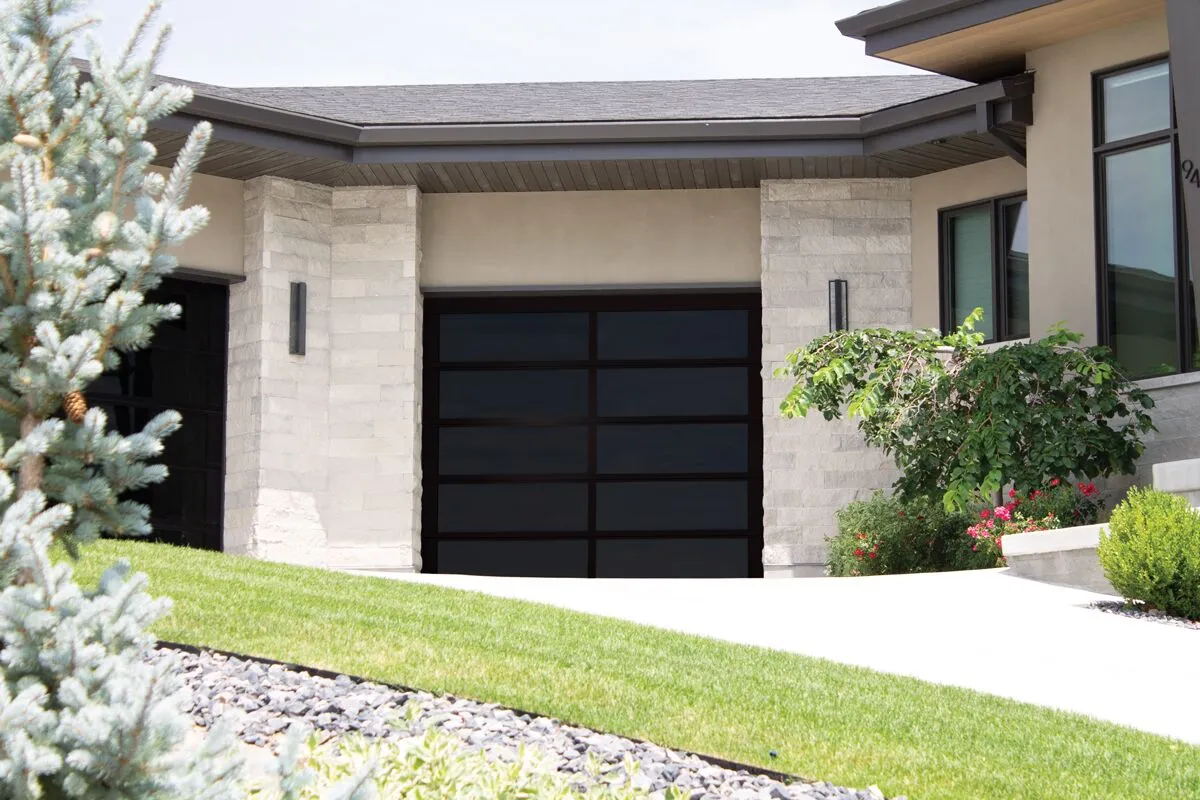
How to Repair a Broken Garage Door Window
Here’s a quick tutorial to safely replace or repair your broken garage door window:
Gather Materials:
Start by collecting the necessary tools and materials: replacement glass or window insert, putty knife, gloves, safety glasses, a screwdriver, and glazing compound or caulking.
Ensure Safety:
Wear heavy gloves and safety glasses throughout the process to protect yourself from any sharp edges or shards.
Remove the Broken Window:
If there are glass fragments left in the frame, carefully remove them using a putty knife or a similar tool. Dispose of broken glass safely in a sturdy container.
Clean the Frame:
With the glass removed, clean the window frame thoroughly to ensure a smooth, secure fit for the new glass. Remove any old glazing compound or sealant left in the frame.
Insert the Replacement Glass:
Place the new glass or window insert into the frame. For most garage doors, you can purchase replacement panels directly from the manufacturer for a perfect fit.
Apply Glazing Compound or Sealant:
Once the glass is in place, apply a layer of glazing compound or weather-resistant sealant around the edges to secure the glass and prevent drafts. Allow it to dry as directed before closing the door fully.
Garage Door Repair Costs: What to Expect
Most people don’t think about setting aside money for garage door repairs—it’s one of those “I’ll never need it” expenses.
However, having a little extra set aside for home repairs can make a big difference when something unexpected happens. We always suggest saving a few dollars here and there for these fixes so you’re not caught off guard by a hefty bill when something inevitably needs attention.
But how much does it typically cost to fix a garage door? We have answers.
Garage Door Repair Costs by Type
Different types of repairs come with their own price ranges, depending on the parts involved and the complexity of the work. Here’s a quick look at some typical costs:
- Springs: Between $100 to $300
- Cables: Between $150 and $200
- Garage Door Openers: Basic repairs can cost around $100, while more extensive fixes or replacements may run up to $300 or more
- Panels: Between $150 and $400 each
For DIY enthusiasts, minor repairs like lubrication or tightening loose hardware may be low-cost or free if you have the right tools.
Additional Factors Affecting Garage Door Repair Cost
Several other factors can influence the cost of garage door repair.
Size of the Door:
Larger garage doors, such as those for two-car garages, require more material and may cost more to repair or replace parts.
Type of Material:
The door’s material—wood, steel, aluminum, or fiberglass—affects the repair cost. For example, wooden doors may require custom panels, which can be more expensive than standard steel panels.
Severity of the Damage:
Minor dents and alignment issues are usually cheaper to fix than severe structural damage or motor problems.
Regional Differences:
Repair costs can vary based on location. In some regions, labor costs may be higher, impacting the overall price of professional garage door repair services.
Garage Door Repair: DIY vs. Hiring a Pro
If we’re being completely honest, garage door repairs require specialized expertise for a few different reasons.
First, garage doors are heavy – often several hundred pounds – and they rely on high-tension springs to function. One small rookie mistake and a spring could snap, sending the door crashing down with serious risk of injury.
Second, DIY repairs can lead to further damage, additional costs, and may even void your door’s warranty.
That said, if you’re handy and have the right tools, there are a few minor repairs you can tackle yourself. Let’s break down what’s safe to try on your own and what’s better left to the pros.
DIY Garage Door Repairs: What You Can Handle
Certain garage door maintenance tasks and minor fixes can easily be DIY-ed with basic tools and a bit of know-how.
For example, you can:
- Lubricate rollers, hinges, and tracks.
- Tighten bolts, screws, and other hardware.
- Clean and realign photo-eye sensors.
While these tasks are fairly simple, you must know your limits. If you’re ever unsure about fixing your garage door, be sure to call professional contractors immediately.
When to Hire a Professional for Garage Door Repair
For more complex or potentially dangerous repairs, getting a professional involved is non-negotiable. These include:
- Replacing springs
- Motor repairs
- Commercial garage door repairs
- Emergency garage door repairs
Professional repair helps make sure your garage door operates safely, efficiently, and with lasting results.
Professional Tips for Garage Door Services!
Emergency Garage Door Repair: When Time Is of the Essence
Garage door issues don’t always happen at convenient times. For example, you might be running late for work when the door suddenly jams halfway, or you could come home after dark to find the door stuck open, leaving your home exposed.
Knowing when a situation calls for emergency garage door repair can help prevent accidents and protect your property.
What Qualifies as an Emergency Garage Door Repair?
Certain garage door problems are too risky to leave unaddressed:
Broken Springs:
Garage doors with broken springs can fall unexpectedly or strain the motor. It’s important to fix them immediately to avoid injury and prevent damage to other components.
Door Not Opening or Closing Correctly:
If your garage door isn’t functioning as it should, it may lead to further mechanical issues.
Door Being Stuck in a Partially Open Position:
A door stuck halfway is an open invitation to burglars. It’s best to address this issue right away to restore full control and security.
Finding an Emergency Garage Door Repair Service
Speed and reliability are essential in an emergency. Here’s how to quickly locate a dependable repair service.
Search for 24/7 Services:
Look for repair services that offer 24/7 emergency garage door repairs. Usually, these providers understand the urgency of emergency repairs and can respond at any time.
Choose Local Technicians:
A local business can often get to you faster. Many offer priority service for emergency calls, so be sure to specify the urgency of your situation.
Check Qualifications:
For emergencies, you need a skilled technician who can diagnose and fix the problem on the first visit. Check online reviews or call to confirm the team’s experience with emergency repairs.
Keep Contact Information Handy:
Save the contact details of a reputable emergency garage door repair service in your phone or somewhere accessible.
When safety and security are on the line, having a trusted professional on standby can save you time, reduce stress, and prevent costly damage.
Preventative Maintenance Tips to Avoid Future Repairs
At Thompson, we receive garage door repair requests all the time, and more often than not, the issue is something that could have been prevented with regular maintenance. A little routine care goes a long way in extending the life of your garage door and avoiding unexpected breakdowns.
Regular Maintenance Tips to Keep Your Garage Door Working
A few simple, regular maintenance tasks can go a long way in preventing common garage door issues.
Lubricate Moving Parts:
Every six months, apply a garage door-specific lubricant to hinges, rollers, and springs. Routine lubrication reduces friction, minimizes wear, and is designed to withstand the temperature changes typical in garages.
Perform Visual Inspections:
Regularly look over your door for any signs of wear, such as frayed cables, rust, or worn-out rollers. Catching these early on can prevent them from developing into bigger, more costly issues.
Conduct a Balance Test:
An off-balance garage door risks complete failure and can gradually damage hardware.
To check the balance, close the door and disconnect it from the automatic opener. Lift the door halfway manually and release it. If the door stays in place, it’s balanced; if it slides down, even slightly, it’s off balance.
In that case, contact a garage door repair company to address the issue.
Seasonal Checks:
For people living in extreme weather, it’s important to perform seasonal checks. Inspect for rust, water damage, or any adjustments needed to cope with temperature shifts. Doing this will help your door withstand seasonal wear and tear.
How Often Should You Schedule Professional Garage Door Maintenance?
Alongside DIY maintenance, consider scheduling a professional safety check for your garage door at least once a year. A contractor can spot issues you might miss, like minor track misalignments, spring tension adjustments, and motor diagnostics.
Annual check-ups not only reduce unexpected repairs but also ensure your garage door operates safely and efficiently—especially if it’s older or sees heavy use.
The Wrap Up
There you have it- our complete, detailed guide on how to repair a garage door!
If there’s one key takeaway here, it’s that garage door repairs are a normal part of home maintenance. Garage doors experience wear and tear all the time, and often, the fixes are simple.
The most important thing is to address any issues promptly before they have a chance to snowball. Whether you’re tackling the problem yourself or calling in a pro, be sure to get your garage door checked out sooner rather than later.
If you need garage door repairs in Reno, Thompson Garage Doors has you covered! Our expert team is ready to help you get your garage door back in shape, rain or shine.
Reach out to us today for guidance and support!
